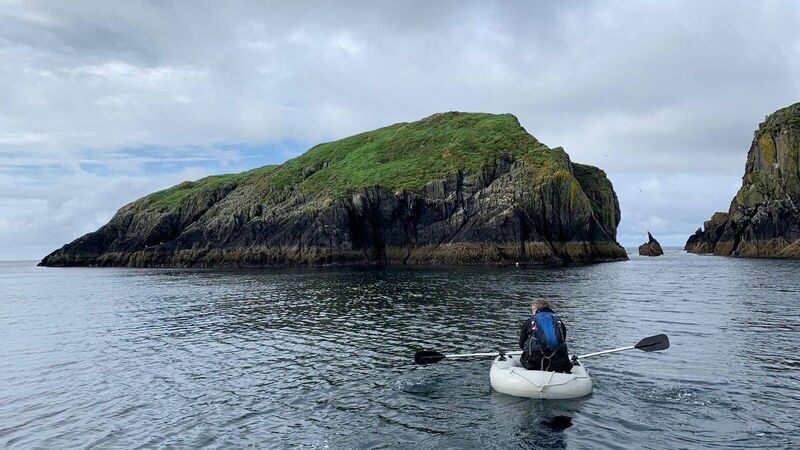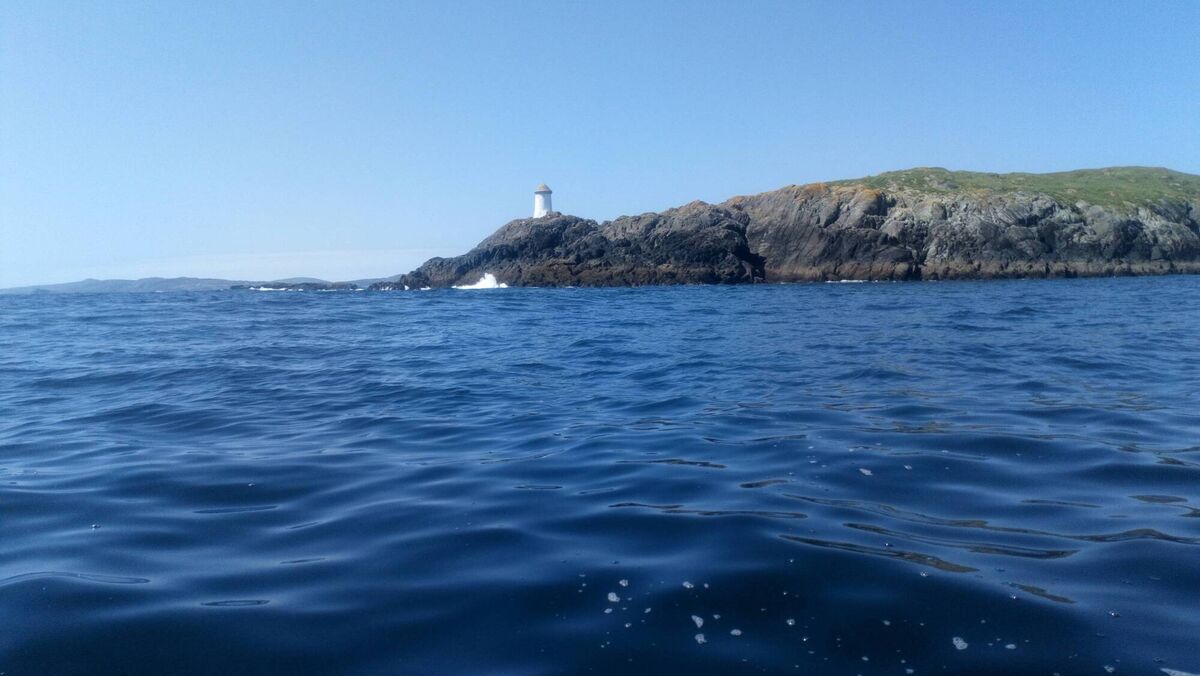The Islands of Ireland: Both Goat Islands worth a visit

While the Beacon in Baltimore, Co Cork, gets all the attention from walkers and photographers, there is another beacon, less significant maybe, but nonetheless interesting, lying about 20 nautical miles due west of the village. On a visit to Goat Island Little recently I discovered a pleasant spot in a becalmed sea. Well, almost. A forceful breeze and a strong current pushed through the gap that separates it from its big brother, Goat Island. Just imagine the kilowatts of energy that pounded this island last Wednesday when Storm Ellen ripped through the sky and the sea like a demented monster.
The island, where no one could ever have lived, is surrounded by jagged steep rocks, except for a tiny inlet where a kayak or other small craft can attempt a landing. And while many goats can be seen boldly grazing on the larger island, it is extremely unlikely that they frequent the little island to which they give their name.
Goat Island and Goat Island Little form an L-shape at the western end of Roaringwater Bay in West Cork. Outside them is the rocky islet of Illaunricmonia, the last island port of call before Newfoundland.
Where Goat Island is distinctive by its cliffs and sea arches, its little brother is marked by a beacon. The larger island also has a ruin of a house where someone once eked out an existence, as testified by lazy beds nearby.
Goat Island Little (or Oileán Clutharach Beag or Goat Island Beg) is a four-acre island at a strategic location and was deemed suitable in the 1850s for the construction of a beacon to aid navigation for boats entering Schull Harbour via Long Island bay. A second beacon was constructed at Copper Point at the west end of Long Island. How the workers and boatmen managed to land themselves, as well as the stone, cement, and other materials needed for construction can only be marvelled at. In the end, the structure reached almost 5m in height and weighed 250 tonnes when it was completed in 1864. It was repaired in 1961 when 40 tons of gravel were brought from Schull to reinforce the foundations.

However, newspaper, later to become famous for its warning that it was keeping its eye on imperialist Russia, recorded its distaste at the new construction. “These celebrated structures, finished at last… but to what order or style of architecture they belong we have been unable to discover. We have however been informed that, like their neighbour at Crookhaven, they are neither useful nor ornamental, as in the day time they are not required, while at night they can not be seen.”
The newspaper went on to recommend that, as in Normandy, the head of the gurnet fish, when properly dried, be filled with tow (wick) from which a brilliant light emanates when lit. Thus 'an inexpensive and brilliant light would be produced, and the effect, no doubt, would be exceedingly useful and picturesque during the ensuing dark winter nights'.
Whatever about the then beacon at Long Island (in 1975 it did get lights, and lighthouse status in 1981), the renewal of any such gurnet lamp on Goat Island Little would have been extremely difficult, if not impossible, owing to the steep nature of the island.
The waters of Goat Island and Goat Island Little are attractive to divers who frequently explore the reefs around them at Man of War Sound, and Goat Island Sound. According to diving.ie 'there is an excellent reef running southeast from the southernmost tip of the island [Little] with water depths of 20m on either side. Start right under the small white beacon on the island. The small islands and rocks which spread west from here have excellent diving on their south side but rapidly run into sand on their north sides'.
records Goat Little as being under the ownership of a Cornelius Moynihan in the mid-19th century. In a report on its lighthouses and beacons last June, Irish Lights considered 'no changes necessary' for the Goat Island Little beacon.
- Goat Island and Goat Island Little are in private ownership. Tours at schullseasafari.ie
-
www.irishlights.ie; www.diving.ie










